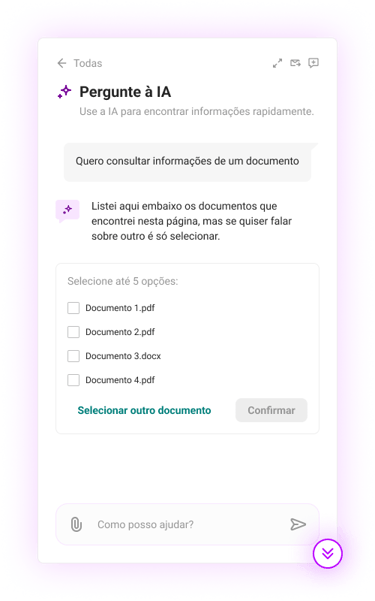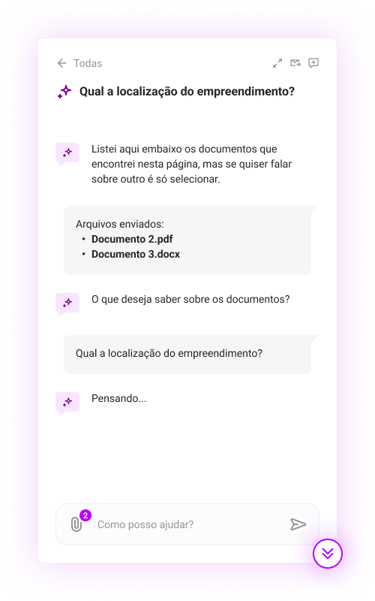Generative AI chatbot for complex document analysis in corporate environments
Challenge
Develop a white-label generative AI chatbot solution to automate reading, comparing, and interpreting lengthy documents (split into volumes), ensuring compliance with strict rules and addressing questions about processes, deadlines, and document libraries. The goal was to create an intuitive tool for users unfamiliar with AI, serving as a foundation to scale rapidly for other clients.
My role
Experience Architecture: Defined interaction standards, conversation flows, and chatbot behaviors, balancing usability and technical precision.
Visual and Functional Design: Created the product interface, ensuring clarity and seamless integration with the existing platform.
Content Governance: Established basic tone-of-voice guidelines for the AI, balancing professionalism and accessibility.
Process
Starting from a detailed diagnosis of existing features (automated comparisons and summaries), I identified the gap for a conversational interface guiding users through complex tasks. Steps included:
Technical immersion: Collaborated with the AI team to understand the language model’s capabilities and limits, ensuring the design reflected technical realities.
Strategic benchmarking: Analyzed internal cases and market solutions, focusing on successful patterns for non-technical users.
Interface definition: Chose a floating chat available across all platform pages, with automatic recognition of on-screen documents and ability to add files from other sections. This decision was validated by preliminary usability tests.
Iterative testing: Conducted sessions with employees (target users) to validate flow intuitiveness, adjusting information hierarchy and the AI’s response detail level.
*The company information has been withheld to ensure the protection of confidential data.
The chatbot reduced report production time by 30%, was showcased at international internal events, and recognized as "Highlight of the Year" at global internal events. During testing, we identified:
Rapid Adoption: The floating interface and contextual document recognition shortened the learning curve.
Overcoming Resistance: Clear tone-of-vocabulary guidelines and explanations of AI functionality increased user trust.
Results




